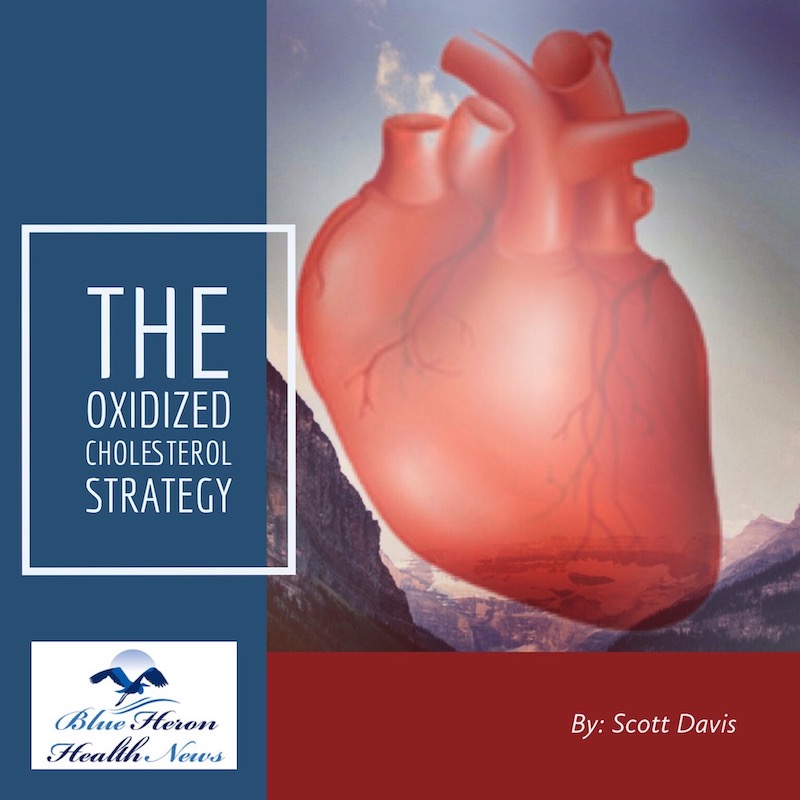
The Oxidized Cholesterol Strategy By Scott Davis is a well-researched program that reveals little known secret on how to tackle cholesterol plaque. This program will tell you step by step instructions on what you need to completely clean plaque buildup in your arteries so as to drop your cholesterol to healthy level. It also helps to enhance your mental and physical energy to hence boosting your productivity.
How do genetic factors influence oxidized cholesterol levels?
Genetic factors play a significant role in influencing oxidized cholesterol levels by affecting various aspects of lipid metabolism, inflammation, oxidative stress, and the body’s ability to handle oxidative damage. Here’s how genetic factors contribute to the regulation and levels of oxidized cholesterol:
1. Genes Involved in Lipid Metabolism
- Apolipoprotein E (APOE):
- Function: APOE is a protein involved in the metabolism of lipoproteins, including low-density lipoprotein (LDL) cholesterol. There are three common variants of the APOE gene: ε2, ε3, and ε4.
- Influence on Cholesterol: The APOE ε4 allele is associated with higher LDL cholesterol levels and a greater propensity for LDL oxidation. Individuals with this allele may have higher levels of oxidized LDL (ox-LDL) due to the increased availability of LDL particles for oxidation.
- Risk of Atherosclerosis: The APOE ε4 allele is also linked to a higher risk of atherosclerosis and cardiovascular disease, partly due to the higher levels of ox-LDL.
- LDL Receptor (LDLR) Gene:
- Function: The LDLR gene encodes the LDL receptor, which is responsible for removing LDL cholesterol from the bloodstream.
- Mutations and Impact: Mutations in the LDLR gene can lead to familial hypercholesterolemia, a condition characterized by very high levels of LDL cholesterol. High LDL levels increase the risk of LDL oxidation, leading to elevated ox-LDL levels and a higher risk of cardiovascular disease.
- Proprotein Convertase Subtilisin/Kexin Type 9 (PCSK9):
- Function: PCSK9 regulates the degradation of LDL receptors, affecting the clearance of LDL cholesterol from the bloodstream.
- Genetic Variants: Variants in the PCSK9 gene can lead to either increased or decreased LDL cholesterol levels. Gain-of-function mutations result in higher LDL levels, increasing the risk of LDL oxidation, while loss-of-function mutations are associated with lower LDL levels and reduced risk of ox-LDL formation.
2. Genes Involved in Inflammation
- Interleukin-6 (IL6) Gene:
- Function: IL-6 is a pro-inflammatory cytokine that plays a key role in the body’s inflammatory response.
- Genetic Variants: Variants in the IL6 gene can influence the level of IL-6 produced, affecting the overall inflammatory state of the body. Higher levels of IL-6 promote oxidative stress, increasing the likelihood of LDL oxidation and higher ox-LDL levels.
- Tumor Necrosis Factor-Alpha (TNF-α) Gene:
- Function: TNF-α is another pro-inflammatory cytokine involved in systemic inflammation.
- Impact on Oxidation: Genetic variations in the TNF-α gene can lead to increased production of this cytokine, contributing to greater oxidative stress and a higher propensity for LDL oxidation.
3. Genes Related to Oxidative Stress
- NADPH Oxidase (NOX) Gene Family:
- Function: The NOX family of genes encodes enzymes that produce reactive oxygen species (ROS), which are key players in the oxidation of LDL cholesterol.
- Genetic Variants: Variations in NOX genes can influence the activity of these enzymes, with certain variants leading to higher ROS production, increased oxidative stress, and greater LDL oxidation.
- Superoxide Dismutase (SOD) Genes:
- Function: SOD enzymes are part of the body’s antioxidant defense system, responsible for neutralizing superoxide radicals, a type of ROS.
- Impact of Variants: Genetic variations in SOD genes can affect the efficiency of this antioxidant system. Reduced SOD activity can lead to higher levels of ROS, increasing the likelihood of LDL oxidation and elevated ox-LDL levels.
- Glutathione Peroxidase (GPX) Genes:
- Function: GPX enzymes reduce hydrogen peroxide, a ROS, to water, helping to protect cells from oxidative damage.
- Genetic Influence: Variants in GPX genes that reduce the activity of these enzymes can result in inadequate neutralization of ROS, leading to increased oxidative stress and higher levels of ox-LDL.
4. Genes Involved in Cholesterol Transport and Efflux
- ATP-Binding Cassette Transporters (ABCA1 and ABCG1):
- Function: These transporters are involved in the efflux (removal) of cholesterol from cells to HDL particles, which then transport cholesterol to the liver for excretion.
- Genetic Variants: Mutations or variations in these genes can impair cholesterol efflux, leading to the accumulation of cholesterol in cells, including macrophages. This can promote the formation of foam cells and contribute to atherosclerosis, often associated with increased ox-LDL levels.
5. Genes Regulating Antioxidant Production
- Nuclear Factor Erythroid 2–Related Factor 2 (NRF2) Gene:
- Function: NRF2 regulates the expression of antioxidant proteins that protect against oxidative damage.
- Impact of Variants: Variants in the NRF2 gene that reduce its activity can lead to lower production of antioxidants, increasing susceptibility to oxidative stress and the oxidation of LDL cholesterol.
Summary
Genetic factors influence oxidized cholesterol levels by affecting the metabolism of lipids, the body’s inflammatory response, the production of reactive oxygen species (ROS), and the efficacy of antioxidant defenses. Variations in genes related to lipid metabolism (like APOE, LDLR, and PCSK9), inflammation (like IL6 and TNF-α), and oxidative stress (like NOX, SOD, and GPX) can increase the likelihood of LDL oxidation, leading to higher levels of oxidized LDL (ox-LDL). These genetic influences can significantly impact an individual’s risk of developing atherosclerosis and cardiovascular diseases.

The Oxidized Cholesterol Strategy By Scott Davis is a well-researched program that reveals little known secret on how to tackle cholesterol plaque. This program will tell you step by step instructions on what you need to completely clean plaque buildup in your arteries so as to drop your cholesterol to healthy level. It also helps to enhance your mental and physical energy to hence boosting your productivity.